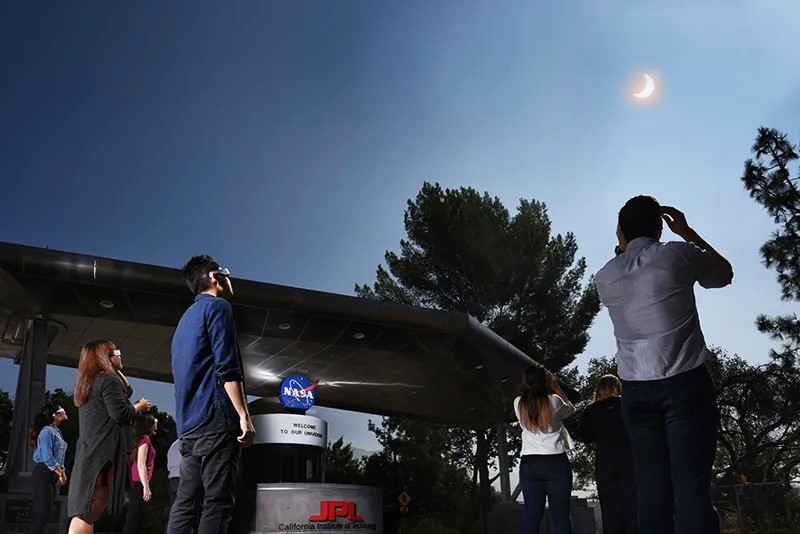The United States will witness its second total solar eclipse on April 8, 2024. During this celestial event, the moon will move in front of the sun, causing daytime darkness in certain areas of the country and providing a unique opportunity to see the sun’s corona, the outermost layer of its atmosphere.
According to NASA, only parts of 15 US states will experience the total solar eclipse. The most recent total solar eclipse in the U.S. was seven years ago, on August 21, 2017, so the memories are still fresh.
The eclipse path continues from Mexico, entering the United States in Texas, and travelling through Oklahoma, Arkansas, Missouri, Illinois, Kentucky, Indiana, Ohio, Pennsylvania, New York, Vermont, New Hampshire, and Maine.
The eclipse will enter Canada in southern Ontario and continue through Quebec, New Brunswick, Prince Edward Island, and Cape Breton. The eclipse will exit continental North America on the Atlantic coast of Newfoundland, Canada, at 5:16 p.m. NDT.
Residents residing in Middle Tennessee or Southern Kentucky can anticipate a near-total eclipse, with 90–95% of the sun’s surface being obscured by the moon.
Cosmic Beauty
This rare phenomenon of a total solar eclipse occurs when the moon perfectly aligns with the sun and blocks its bright light, creating a breathtaking display of cosmic beauty that will be visible from select locations across the United States.
This rare event will result in a discernible shift in lighting, though it’s noteworthy that the sky will not plunge into complete darkness. For those in the path of totality, the world will be bathed in an eerie twilight, a sight that has captivated and intrigued humans for centuries. Despite the sun being partially hidden, looking directly at it without appropriate protection can cause permanent eye damage.
Also Read: NASA considers humanoid robots for space missions
Safety
Caution should be exercised when observing a partial eclipse, as direct viewing of the sun can be harmful.
“Safety is the number one priority when viewing a total solar eclipse. Be sure you’re familiar with when you need to wear specialized eye protection designed for solar viewing,” NASA said.
The 2024 eclipse will last for just under 3 hours. Those in the path of totality will experience over 4 minutes of totality, during which it’s safe to look directly at the sun without filters.
It is strongly advised to use specialized eclipse glasses rather than regular sunglasses for safe observation.

Alternatively, solar filters specifically designed for binoculars or telescopes can be employed. Another indirect viewing option is to create an eclipse viewer using a pinhole camera, which projects the eclipse onto a surface. Additionally, everyday items with small holes, such as a colander, can serve as makeshift viewing tools.
Due to the rarity of this natural phenomenon, it is anticipated to attract enormous crowds, with more than a million visitors expected to converge.
All solar eclipses start as partial, with only part of the sun being blocked. But total eclipses have a special middle section, called totality, in which the moon blocks all the sun’s light.
https://news.google.com/rss/articles/CBMiQWh0dHBzOi8vdm9uLmdvdi5uZy91LXMtdG8tZXhwZXJpZW5jZS10b3RhbC1zb2xhci1lY2xpcHNlLWluLTIwMjQv0gEA?oc=5
2024-01-01 08:41:38Z
CBMiQWh0dHBzOi8vdm9uLmdvdi5uZy91LXMtdG8tZXhwZXJpZW5jZS10b3RhbC1zb2xhci1lY2xpcHNlLWluLTIwMjQv0gEA
Tidak ada komentar:
Posting Komentar